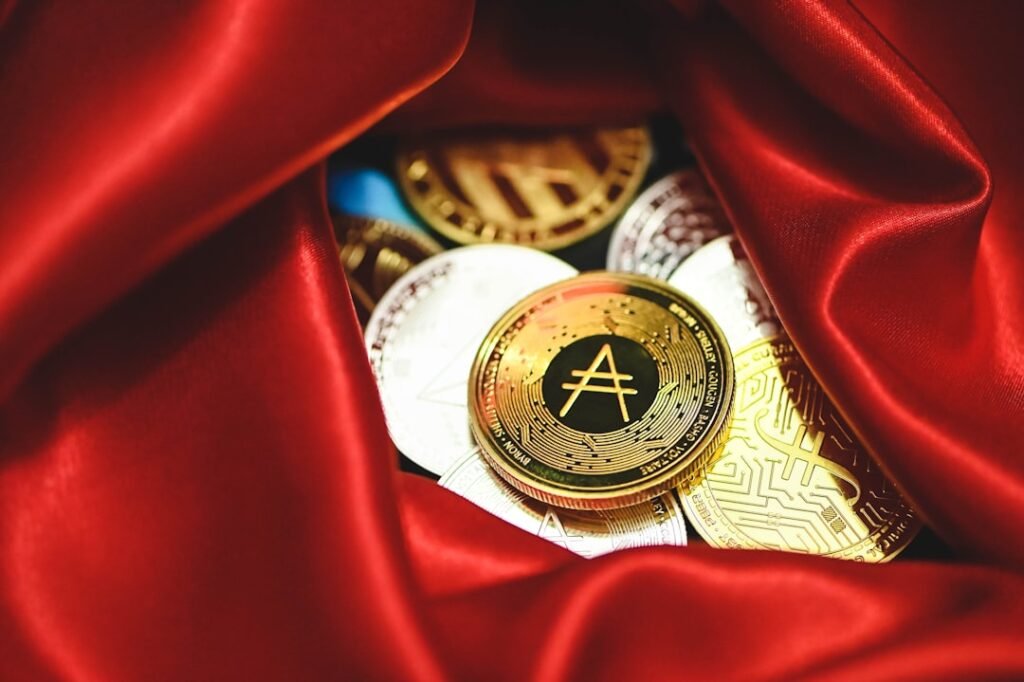Security Token Offerings (STOs): The Future of Compliant Blockchain Fundraising
Security Token Offerings (STOs) have emerged as a revolutionary yet regulated method for raising capital using blockchain technology. Unlike their controversial predecessor—Initial Coin Offerings (ICOs)—STOs represent legally compliant investment assets backed by tangible value. These tokens derive their worth from real-world instruments including company equity, debt obligations, or physical assets like real estate and commodities. Designed to operate within established regulatory frameworks, STOs combine smart contracts and decentralized technology to deliver unprecedented transparency, investor protection, and regulatory compliance.
The market potential is staggering: According to Business Research Insights, the global security token market reached $1.91 billion in 2024 and is projected to grow to $17.44 billion by 2033—a remarkable 27.3% compound annual growth rate. Even more ambitious projections from Arca and Coalition Greenwich estimate the tokenized securities market could surpass $20 trillion by 2030. This explosive growth positions STOs not as a speculative trend, but as a fundamental shift in how capital formation and asset ownership will function in the digital age.
Understanding Security Token Offerings
At its core, a Security Token Offering (STO) is a regulated fundraising method that issues blockchain-based tokens representing legal ownership in an asset, company, or financial instrument. What fundamentally distinguishes STOs from ICOs is their compliance with securities regulations. While ICOs typically distributed utility tokens with no intrinsic value or regulatory oversight, security tokens provide investors with legally enforceable rights and protections. These digital assets can represent fractional ownership in companies (similar to traditional shares), debt instruments like bonds, or direct ownership stakes in physical assets.
The regulatory foundation transforms the investment proposition. STOs must register with financial authorities like the SEC (U.S.), FINMA (Switzerland), or ESMA (Europe), providing prospectuses, transparent disclosures, and investor verification processes. This compliance framework significantly reduces fraud risks while creating legitimate investment opportunities on blockchain infrastructure.
Types of Security Tokens
Security tokens are categorized based on the underlying assets or financial rights they represent:
1. Equity Tokens
Equity tokens function like traditional shares, representing direct ownership in a company. Token holders gain rights including dividend distributions, voting power in corporate decisions, and profit-sharing. Issued on blockchain networks, they enable transparent record-keeping while reducing administrative intermediaries. Crucially, they fall under securities regulations, requiring issuers to comply with relevant laws. Their technological foundation enables fractional ownership, lowering investment barriers and enhancing liquidity in traditionally illiquid private markets.
2. Asset-Backed Tokens
These tokens derive value from physical or financial assets such as real estate, commodities, or precious metals. Tokenization democratizes access to high-value, traditionally illiquid markets—imagine owning a fraction of a commercial building or a rare painting. The token's price directly correlates with the underlying asset's market value, creating more stability compared to speculative cryptocurrencies. Blockchain ensures transparent ownership verification and efficient transfers, while regulatory compliance guarantees investor protection.
3. Debt Tokens
Functioning similarly to bonds, debt tokens represent loans or financial obligations. Investors provide capital to an entity in exchange for periodic interest payments and eventual principal repayment. Smart contracts automate compliance and payment schedules, ensuring transparent debt management. This reduces administrative costs associated with traditional bond issuance while enhancing liquidity through secondary market trading.
4. Utility Tokens
Though often associated with platform access rather than investments, utility tokens can be classified as securities if they meet criteria established by the Howey Test (discussed later). They typically grant holders access to specific services or features within a blockchain ecosystem. Some offer staking rewards or exclusive benefits. Regulatory scrutiny applies if they imply financial returns, requiring issuers to ensure legal compliance.
The STO Process: How It Works
Launching an STO follows a structured, compliance-focused pathway:
1. Preparation
The journey begins with meticulous planning: defining the token's purpose, legal structuring, and regulatory strategy. Issuers must analyze jurisdictional requirements, draft detailed whitepapers, and establish investor eligibility criteria (often restricted to accredited or institutional investors). Early engagement with legal and financial experts is critical to navigate complex securities laws and secure regulatory approval.
2. STO Design
This phase determines the token's economic model and technical architecture. Issuers define token supply, distribution mechanisms, investor rights (voting, dividends), and transfer restrictions. Smart contracts are designed to automate compliance, governance, and transactional functions—ensuring transparency while minimizing manual oversight.
3. Technology Selection
Choosing the right blockchain infrastructure is paramount for security, scalability, and compliance. Platforms like Ethereum (using standards like ERC-1400 for security tokens), Polkadot, or private enterprise blockchains offer varying benefits in transaction speed, cost, and functionality. Integration of identity verification and automated compliance protocols is essential to prevent fraud and enable secure transactions.
4. Financial Service Partnerships
Issuers collaborate with licensed custodians, broker-dealers, and legal firms to ensure regulatory adherence and secure asset management. These partners assist in structuring the offering, managing token issuance, and facilitating investor onboarding through KYC/AML verification. Reputable partners enhance credibility and streamline fundraising across jurisdictions.
5. Capital Raising
The active fundraising phase targets accredited or institutional investors through private placements or regulated public offerings. Marketing emphasizes transparency, asset backing, and regulatory compliance. Investors undergo identity verification before purchasing tokens. Smart contracts automate transactions while enforcing investment terms and jurisdictional restrictions.
6. Token Listing & Secondary Trading
Post-funding, tokens list on regulated security token exchanges (like tZERO or INX) or secondary markets. This step provides crucial liquidity, allowing investors to trade tokens under compliance rules. Exchanges enforce eligibility requirements and trading restrictions to maintain regulatory integrity.
The Howey Test: Defining a Security
A fundamental question in tokenization is: What qualifies as a security? In the U.S., the landmark 1946 SEC v. W.J. Howey Co. case established the Howey Test, which determines whether an asset meets security classification under the Securities Act of 1933. An asset qualifies if it meets all four criteria:
- Investment of Money: Investors provide capital.
- Common Enterprise: Funds are pooled with shared risks and rewards.
- Profit Expectation: Investors anticipate financial gains.
- Efforts of Others: Returns depend predominantly on a third party's managerial or entrepreneurial work.
Tokens meeting these criteria—including most equity, debt, and asset-backed tokens—must comply with securities regulations.
Advantages of STOs
STOs deliver compelling advantages over traditional fundraising and ICOs:
-
Regulatory Compliance: Operating within securities frameworks provides legal investor protection, reduces fraud, and builds market confidence. Regulatory oversight ensures transparency in disclosures and operations.
-
Enhanced Liquidity: Tokenization enables fractional ownership and 24/7 trading on global exchanges. This unlocks liquidity for traditionally illiquid assets (like real estate or private equity) and broadens investor access.
-
Cost Efficiency: Blockchain eliminates intermediaries (brokers, transfer agents), reducing issuance and administrative costs. Smart contracts automate compliance, dividend distribution, and reporting—lowering operational overhead.
-
Transparency & Security: Every transaction is immutably recorded on-chain, minimizing fraud. Real-time visibility into ownership, corporate actions, and asset performance builds trust. Automated compliance ensures adherence to regulations.
-
Global Investor Access: STOs transcend geographical boundaries, allowing companies to raise capital internationally. While jurisdictional regulations apply, compliant platforms can onboard verified investors globally, expanding the potential capital pool.
Navigating STO Challenges
Despite transformative potential, STOs face significant hurdles:
-
Regulatory Complexity: Navigating varying securities laws across jurisdictions requires specialized legal expertise. Compliance costs can be substantial, and evolving regulations create uncertainty. Non-compliance risks penalties or operational shutdowns.
-
Limited Investor Pool: Regulatory requirements often restrict participation to accredited or institutional investors, reducing the potential investor base compared to ICOs. Expanding access to retail investors remains challenging under current frameworks.
-
Technical Barriers: Successful STOs demand expertise in blockchain development, smart contract programming, cybersecurity, and regulatory technology (RegTech). Vulnerabilities in code or infrastructure could lead to exploits, financial losses, or compliance failures.
Investor's Guide: How to Participate in an STO
For investors, participating in STOs involves key steps:
-
Research & Due Diligence: Thoroughly assess the project—its team, asset backing, business model, token economics, and regulatory status. Verify legal documentation and valuation reports. Seek independent financial advice.
-
Register on a Compliant Platform: Sign up with regulated STO issuance platforms or exchanges. Complete KYC (Know Your Customer) and AML (Anti-Money Laundering) verification, providing identification and accreditation proof.
-
Fund Your Account: Deposit fiat currency or approved cryptocurrencies using secure, platform-specified methods. Understand transaction fees and processing times.
-
Purchase & Manage Tokens: After selecting an STO, confirm your investment. Tokens are issued to your blockchain wallet. Monitor holdings and utilize secondary markets for trading when listed.
Launching an STO: Critical Considerations
For issuers, several factors demand careful evaluation:
-
Asset Selection: What will be tokenized? Equity, debt, or physical assets? Each class carries distinct regulatory requirements, valuation methodologies, and liquidity profiles. The tokenized asset must align with investor demand and compliance frameworks.
-
KYC/AML Implementation: Robust identity verification and transaction monitoring systems are non-negotiable. Automation streamlines compliance but requires secure integration to prevent data breaches and regulatory penalties.
-
Corporate Structure & Governance: Establish a legally compliant entity. Define token holder rights, voting mechanisms, dividend policies, and dispute resolution procedures within clear governance frameworks. Transparent reporting is essential.
-
Tokenization Platform Choice: Select platforms offering secure token issuance, management, built-in compliance features, and secondary market support. Prioritize scalability, auditability, and integration with existing financial systems.
The STO Launch Process: A Step-by-Step Roadmap
-
Define Structure: Determine token type (equity/debt/asset), supply, distribution model, and investor rights (voting, dividends). Establish clear legal documentation.
-
Ensure Regulatory Compliance: Engage legal counsel to navigate SEC, ESMA, FINMA, or local regulations. Prepare prospectuses, private placement memoranda, and ensure licensing.
-
Select Technology Platform: Choose a blockchain (Ethereum, Tezos, etc.) and token standard (e.g., ERC-1400) that balances security, compliance features, and cost.
-
Token Development: Develop and rigorously audit smart contracts governing issuance, transfers, dividends, and compliance. Partner with experienced blockchain developers.
-
Fundraising Execution: Implement targeted marketing to accredited investors. Integrate KYC/AML verification and a secure payment portal. Maintain transparent communication throughout.
-
Exchange Listing: Post-STO, list tokens on regulated exchanges to enable secondary trading and provide investor liquidity, ensuring the exchange complies with relevant securities laws.
前進之路
STOs represent a powerful convergence of blockchain innovation and established securities regulation. They offer issuers access to global capital pools while providing investors the security and rights expected in traditional markets—enhanced by blockchain’s efficiency, transparency, and liquidity benefits. While challenges around regulation, technology, and market access persist, the trajectory is clear: tokenization is reshaping finance.
The projected growth—from billions to potentially trillions—underscores STOs' potential to democratize investment, unlock asset value, and create more efficient capital markets. Success, however, hinges on meticulous planning, unwavering commitment to compliance, and strategic execution. For investors and issuers alike, understanding STOs is no longer optional—it's essential for navigating the future of finance.










